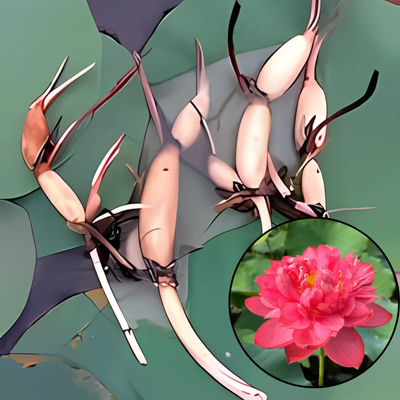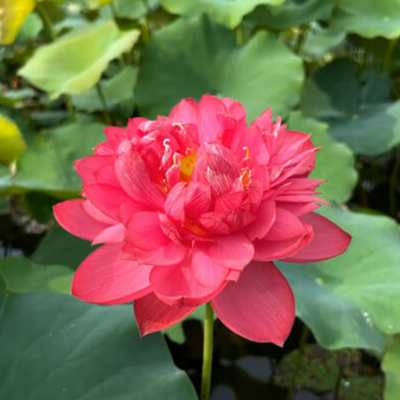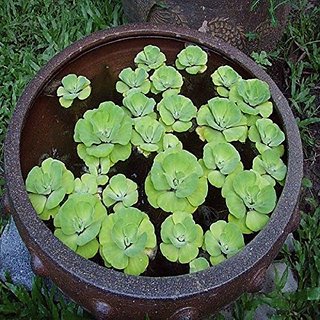Rare Heliconia Wagneriana Live Plant Heliconia psittacorum Live Plant
Rs. 499.00
Guaranteed Safe Checkout
Introducing the Exquisite Heliconia
Psittacorum Plant: A Tropical Marvel for
Your Home
Elevate your indoor and outdoor spaces with the captivating beauty of the Heliconia Psittacorum Plant. Renowned for its striking appearance and tropical allure, this unique plant is more than just a decorative addition to your space; it's a statement piece that brings the essence of exotic landscapes right to your doorstep.
Key Features:
Vibrant and Striking Foliage:
- The Heliconia Psittacorum boasts an array of vibrant, elongated leaves that mimic the allure of a tropical paradise.
- Its lush greenery, paired with distinct, eye-catching blooms, adds an instant touch of elegance to any environment.
Eye-Catching Blooms:
- Stand in awe as your Heliconia Psittacorum bursts into a riot of colors with its spectacular blooms.
- The plant's unique inflorescence showcases shades of red, orange, and yellow, creating a mesmerizing visual display that captures the essence of a lush rainforest.
Easy Care and Low Maintenance:
- Perfect for both seasoned gardeners and beginners, the Heliconia Psittacorum is remarkably low-maintenance.
- Thriving in a variety of conditions, this plant requires minimal attention while rewarding you with its stunning aesthetics.
Adaptable Growing Conditions:
- Whether placed indoors in a well-lit room or outdoors in a tropical garden setting, the Heliconia Psittacorum adapts effortlessly to different growing conditions.
- This versatility makes it an ideal choice for various climates, allowing you to enjoy its beauty wherever you call home.
Benefits:
A Touch of the Tropics:
- Transform your living space into a tropical haven with the Heliconia Psittacorum.
- Its lush foliage and vibrant blooms instantly transport you to exotic destinations, creating a serene and relaxing atmosphere.
Year-Round Appeal:
- Unlike seasonal flowers, the Heliconia Psittacorum maintains its allure throughout the year.
- Whether in full bloom or not, its striking foliage ensures a continuous visual treat for you and your guests.
Indoor Elegance:
- Bring the beauty of the outdoors inside with this indoor-friendly tropical plant.
- Elevate your interior decor by placing the Heliconia Psittacorum in a well-lit room, adding a touch of sophistication and natural charm to your home.
Outdoor Showstopper:
- Enhance your garden or patio with a showstopping centerpiece.
- The Heliconia Psittacorum's vibrant presence adds flair to any outdoor setting, making it a favorite among landscapers and gardening enthusiasts.
Rare and Exotic Appeal:
- Stand out from the ordinary with the rare and exotic Heliconia Psittacorum.
- Its unique appearance and uncommon features make it a conversation starter, perfect for those who appreciate the extraordinary.
Durable and Hardy:
- Built to withstand diverse conditions, the Heliconia Psittacorum is a hardy plant that flourishes with minimal effort.
- Whether you're a seasoned gardener or just starting, this plant offers durability without compromising its aesthetic charm.
Artistry in Nature:
- Consider the Heliconia Psittacorum a living work of art. Its architectural elegance and vibrant palette make it a natural masterpiece, turning your living space into a canvas of tropical splendor.
Statement Piece for Any Space:
- Whether adorning a living room, a balcony, or a garden, the Heliconia Psittacorum effortlessly becomes the focal point of any space.
- Elevate your surroundings with a touch of botanical opulence.
The Heliconia Psittacorum Plant is not merely a plant; it's an experience. Embrace the allure of the tropics, enhance your surroundings with year-round beauty, and make a statement with this rare and exotic botanical masterpiece. Elevate your living space with the Heliconia Psittacorum and let the magic of tropical flora unfold in your home or garden.




